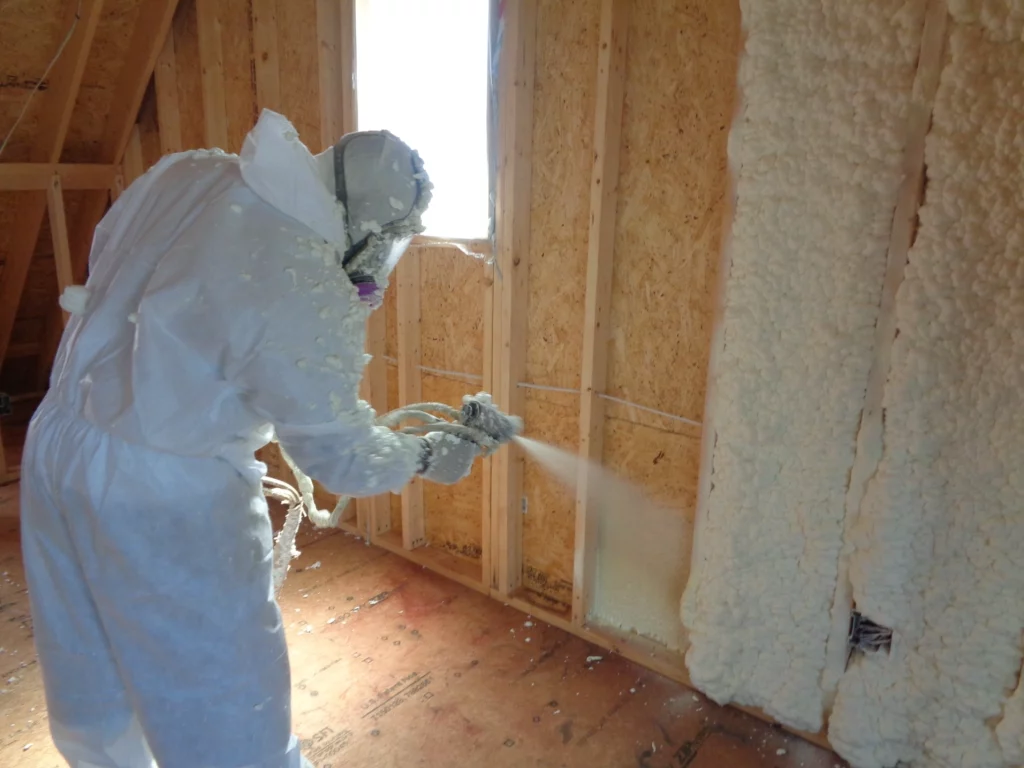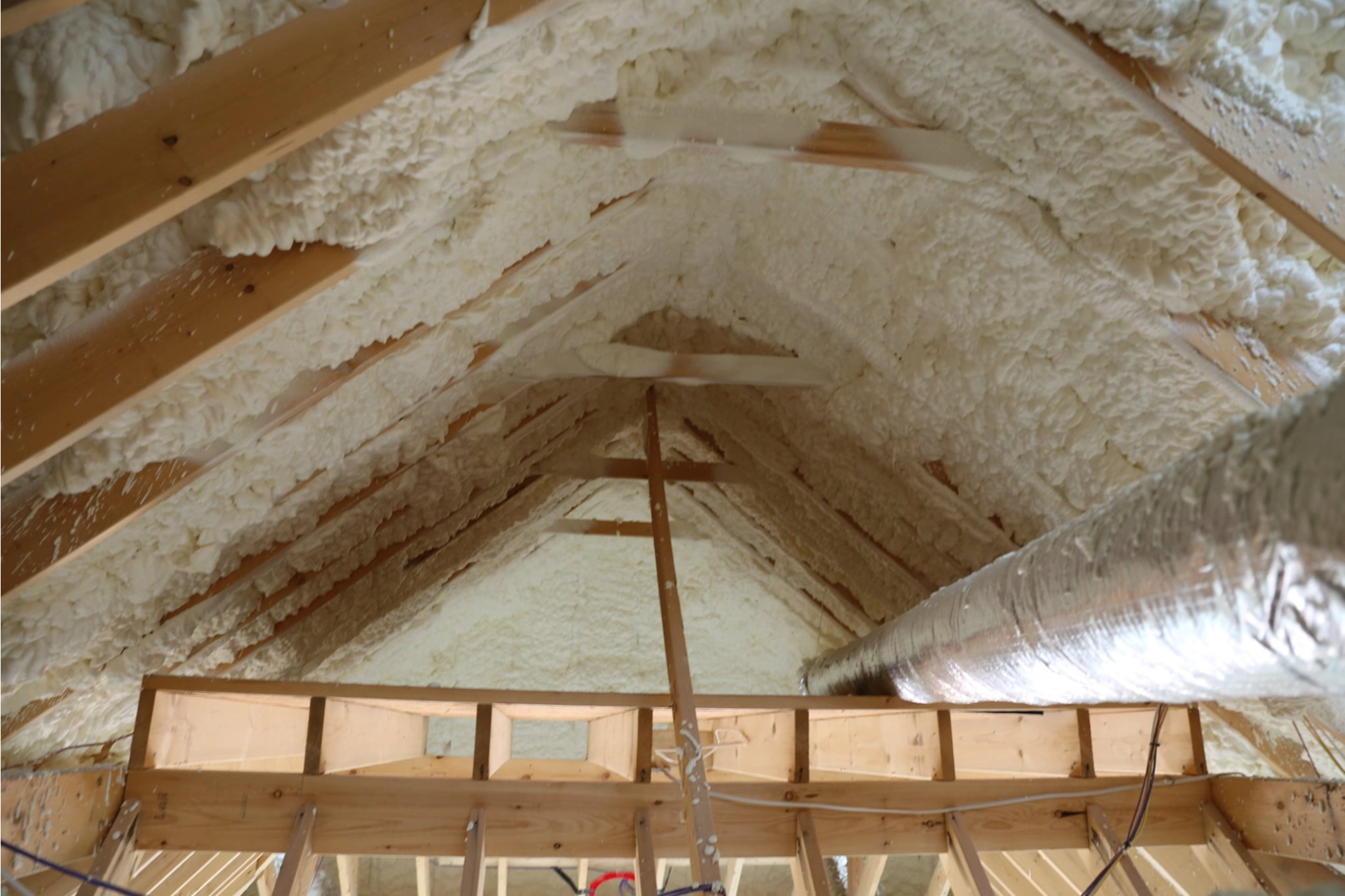Spray foam insulation performs well in humid Marion County homes when correctly installed and maintained. It forms a continuous air barrier that helps control moisture infiltration, which is a key factor in preventing mold growth, wood rot, and energy loss. In high-humidity areas like central Florida, open-cell and closed-cell spray foams both offer viable solutions, though each comes with specific performance traits. Humidity affects insulation differently than temperature. Moisture in the air can penetrate wall assemblies, disrupt R-values, and damage structural materials. Spray foam helps stabilize interior conditions by resisting vapor transfer and sealing gaps that would otherwise allow moist air inside. This capability is particularly useful in older homes and buildings with existing air leakage issues. R-Factor Spray Foam applies this technology with direct experience in Marion County’s climate, based on completed projects across Ocala, Belleview, Dunnellon, and surrounding areas. The following sections explain how this insulation performs, key decision factors, and local environmental considerations.
Moisture Management in Central Florida Homes
Humidity levels in Marion County frequently exceed 70%, especially during the summer. High interior humidity leads to condensation, which can settle inside walls, attics, or crawl spaces. Spray foam reduces this risk by preventing warm, moist air from mixing with cooler, drier interior air.
Technical Comparison of Insulation Types
| Insulation Type | R-Value per Inch | Vapor Barrier | Air Sealing | Water Resistance | Application Areas |
|---|---|---|---|---|---|
| Open-Cell Spray Foam | 3.5 – 4.0 | No | Excellent | Low | Interior walls, attics |
| Closed-Cell Spray Foam | 6.0 – 7.0 | Yes | Excellent | High | Crawl spaces, exterior walls |
| Fiberglass Batts | 2.9 – 3.8 | No | Poor | Low | Stud cavities, ceilings |
| Cellulose (blown-in) | 3.2 – 3.8 | No | Moderate | Low | Attics, wall cavities |
Practical Bonus Tip
Closed-cell foam in crawl spaces below Marion homes adds structural rigidity while deterring moisture buildup. Avoid using open-cell in high-flood-risk areas.
Technical Specs for Spray Foam Performance
| Feature | Open-Cell Foam | Closed-Cell Foam |
|---|---|---|
| Perm Rating | ~10 perms/inch | ~1 perm/inch |
| Expansion Ratio | ~100:1 | ~30:1 |
| Water Absorption | High | Low |
| Structural Support | Minimal | Moderate |
| Sound Dampening | High | Moderate |
| Cost per Board Foot (avg) | $0.45 – $0.65 | $0.90 – $1.25 |
Environmental Considerations in Marion County
Local housing stock often includes block wall structures with vented attics. These systems tend to suffer from thermal bridging and unsealed joints. Spray foam addresses both issues effectively:
- Vented attics: Closed-cell foam can be applied to roof decks to create unvented, conditioned spaces that stabilize attic temperature.
- Concrete block walls: Spray foam adheres well to masonry, offering better air sealing than traditional furring insulation.
- Crawl spaces: Sealing floor joists with spray foam prevents moisture intrusion and improves floor temperature stability.
Recent data from the Florida Climate Center shows average July dew points over 74°F in Ocala, confirming the need for moisture-resisting insulation materials. 
Things to Consider Before Making a Decision
- Building Age and Envelope Type: Older homes may need air sealing first to maximize performance.
- Ventilation System: Homes using open-cell foam must have proper mechanical ventilation to manage indoor humidity.
- Flood Risk Zones: Closed-cell foam offers better moisture resistance for homes in low-lying or flood-prone areas.
- Budget Constraints: Initial costs are higher than fiberglass but offer long-term savings through energy efficiency.
Bonus Tip
Always ask for the moisture content reading of substrate surfaces before spray foam application. Anything over 18% moisture may affect adhesion and performance.
R-Factor Spray Foam Services That Match This Need
- Closed-Cell Spray Foam: High-density insulation suitable for crawl spaces, roof decks, and flood-prone structures.
- Open-Cell Spray Foam: Ideal for interior walls and attics where sound control and breathability are needed.
- Attic Insulation: Converts vented attics into sealed, controlled environments to lower HVAC loads.
- Crawl Space Insulation: Prevents moisture migration and floor temperature swings common in Marion County homes.
Common Questions
Is spray foam safe in high humidity?
Yes. When cured and installed correctly, it resists mold and water vapor intrusion.
Will I need a dehumidifier?
If open-cell spray foam is used, a dehumidifier may be required unless a mechanical ventilation system is in place.
Can spray foam be applied to existing homes?
Yes. Spray foam can be retrofitted in attics, crawl spaces, and wall cavities.
Does insulation prevent mold completely?
No insulation can eliminate mold risk, but spray foam significantly reduces conditions that allow it to grow.
Get Expert Guidance
For insulation solutions that perform under Marion County’s humidity levels, contact: R-Factor Spray Foam Phone: (352) 663-5905 Email: milleruliano.tm@gmail. Get informed, inspect your conditions, and apply the right materials with confidence.
Frequently Asked Questions
How long does spray foam insulation last?
Spray foam lasts over 30 years with minimal degradation, assuming it’s protected from UV and physical damage.
What maintenance is needed after installation?
Inspect areas annually for pests or punctures. No routine maintenance is required.
How does spray foam affect HVAC sizing?
Better insulation reduces HVAC load. Undersized systems may not properly dehumidify in sealed homes, so sizing may need adjustment.
Can spray foam be used on metal buildings in this region?
Yes. Closed-cell foam is often used in metal buildings to prevent condensation and heat transfer.
What happens if spray foam gets wet?
Closed-cell resists water absorption; open-cell may absorb moisture and require drying or replacement depending on exposure.


